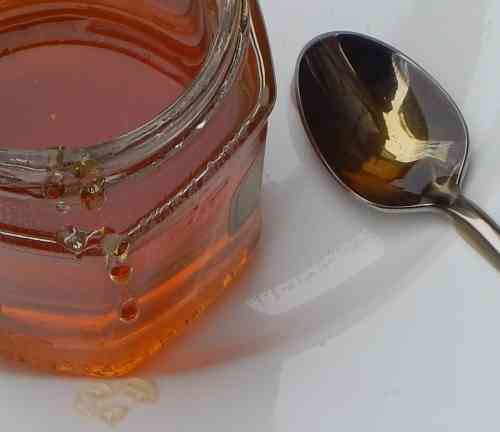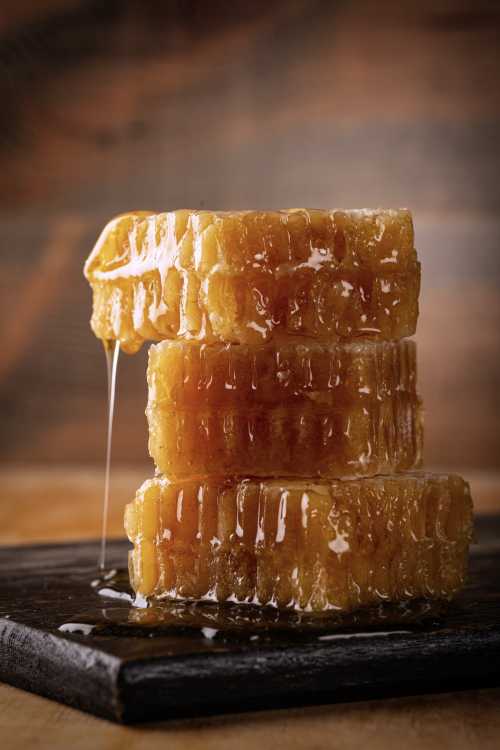Honey Colour
The colour of honey varies in shade, depending on the foraging activities of honey bees and other factors.
Here we'll compare the different shades of honey, and consider some common questions, such as whether darker honey is healthier, and how the colour of honey is measured.
The Colour Of Honey - Why Honey Is Dark Or Light
The colour spectrum of honey ranges from transparent through various shades of amber, to very dark, black or almost black1,2.
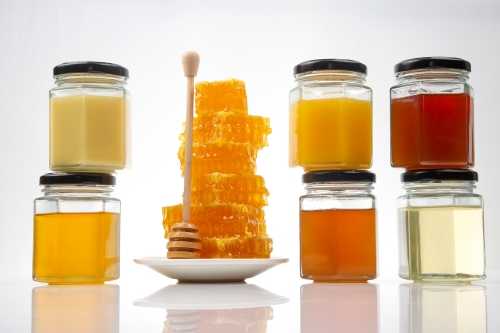
The colour of honey can be influenced by a variety of factors including2:
Plant origin
Different species of plant have varying properties that will influence the chemical and mineral composition of the honey. For example, colour is affected by pollen content.
Foraging region and season
Region and season (where and when bees forage) can impact chemical and mineral composition of honey, and in turn, affect the colour of honey.
Storage
Storage time can affect the colour of some honey varieties (such as Linden and Acacia honey), making it darker1,2.
Crystallization
Crystallization can make honey turn lighter2.
Are darker honeys better for you?
It seems likely that darker honey might have the edge over lighter coloured honeys in certain respects. In general, research tells us that:
- There is a correlation between honey colour and anti-oxidant activity1.
- Amino acid and mineral content is broader in darker honeys2.
- However, whereas longer term storage can make honeys darker this won't necessarily improve it! Research suggests that long-term storage of honeys at room temperature in the dark has been found to negate the antibacterial effect of honey against some bacteria3.
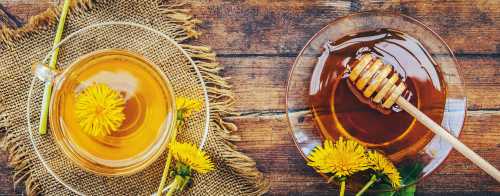
Examples of
light honeys
Examples of
dark honeys
Does black honey really exist?
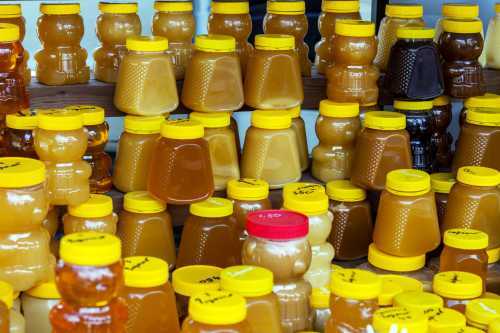
Some honey is certainly described as 'black' or 'nearly black', including in scientific papers, for example:
- Meadow sage honey, a unifloral honey made by bees foraging on the plant Salvia pratensis, has been described as: "Black, strong, sage-like odor, liquid, viscous"1.
- Fennel honey made from bees foraging on Foeniculum vulgare is described as: "Almost black, strong, caramel odor, liquid, viscous"1.
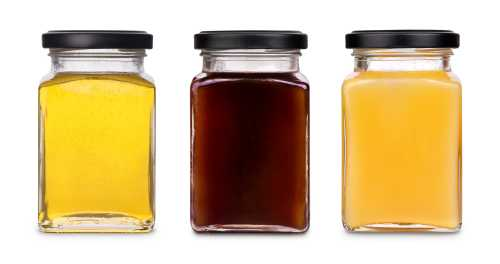
How is the colour of honey measured?
Scales have been developed to measure and grade the colour of honey.
The Pfund And Lovibond Scales
Joseph Williams Lovibond was an English brewer born in 1833.
He developed the world's first practical colorimeter and was the originator of the Degrees Lovibond scale. The system has been used to measure the colour of honey along with the Pfund scale, developed later.
These scales use the terms water white, extra white through to dark amber. This table is from the USDA's document: "United States Standards for Grades of Extracted Honey"
| USDA Color Standards Designations | Color Range USDA Color Standards | Color Range Pfund Scales Millimeters | Optical Density _1/ |
|---|---|---|---|
| Water White | Honey that is Water White or lighter in color | 8 or less | 0.0945 |
| Extra White | Honey that is darker than Water White, but not darker than Extra White in color. | Over 8 to and including 17 | 0.189 |
| White | Honey that is darker than Extra White, but not darker than White in color. | Over 17 to and including 34 | 0.378 |
| Extra Light Amber | Honey that is darker than White, but not darker than Extra light Amber in color. | Over 34 to and including 50 | 0.595 |
| Light Amber | Honey that is darker than Extra Light Amber but not darker than light Amber in color. | Over 50 to and including 85 | 1.389 |
| Amber | Honey that is darker than light Amber, but not darker than Amber in color. | Over 85 to and including 114 | 3.008 |
| Dark Amber | Honey that is darker than Amber in color. | Over 114 |
Other tools are also being proposed for measuring the colour of honey5.
References
1. Bodó A, Radványi L, Kőszegi T, Csepregi R, Nagy DU, Farkas Á, Kocsis M. Quality Evaluation of Light- and Dark-Colored Hungarian Honeys, Focusing on Botanical Origin, Antioxidant Capacity and Mineral Content. Molecules. 2021 May 10;26(9):2825. doi: 10.3390/molecules26092825. PMID: 34068717; PMCID: PMC8126196.
2. Szabó, Rubina Tünde, Miklós Mézes, Tamás Szalai, Edit Zajácz and Mária Kovács-Weber. “Colour identification of honey and methodical development of its instrumental measuring.” (2016).
3. Piotraszewska-Pająk, Allna and Gliszczyńska-Świgło, Anna. "Directions of Colour Changes of Nectar Honeys Depending on Honey Type and Storage Conditions" Journal of Apicultural Science, vol.59, no.2, 2015, pp.51-61. https://doi.org/10.1515/jas-2015-0019
4.United States Standards for Grades of Extracted Honey. USDA, Agricultural Marketing Service. Effective May 23, 1985. Table 1.
5. Zsanett Bodor, et al. "Colour of Honey: Can We Trust the Pfund Scale? – An Alternative Graphical Tool Covering the Whole Visible Spectra." Lebensmittel-Wissenschaft + Technologie, v. 149 ,. pp. 111859. doi: 10.1016/j.lwt.2021.111859
If you found this page helpful or interesting, I'd really be grateful if you would share it with others - if not this page, perhaps another, such as Gardening For Bees.
Thank you so much :) .
